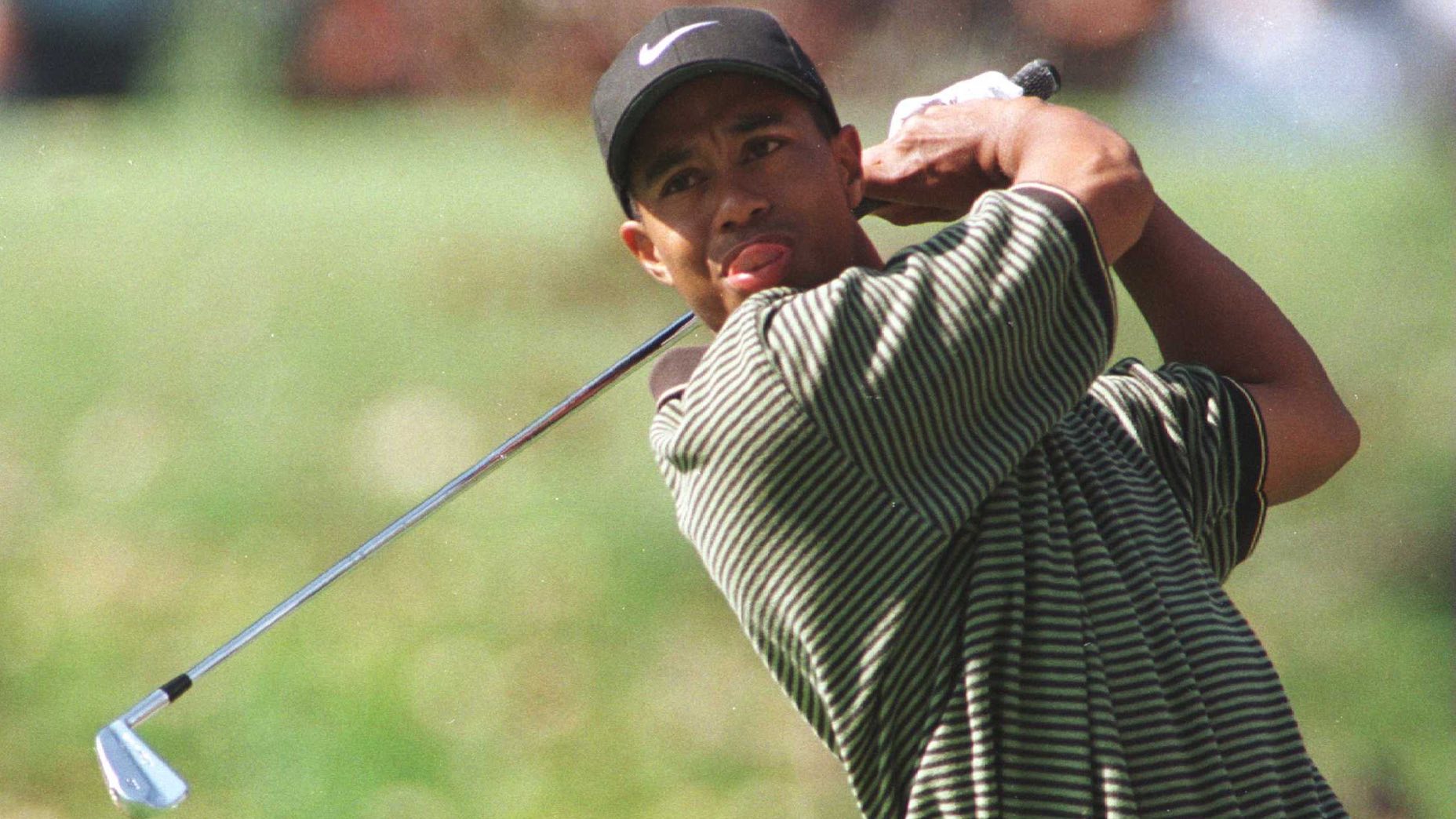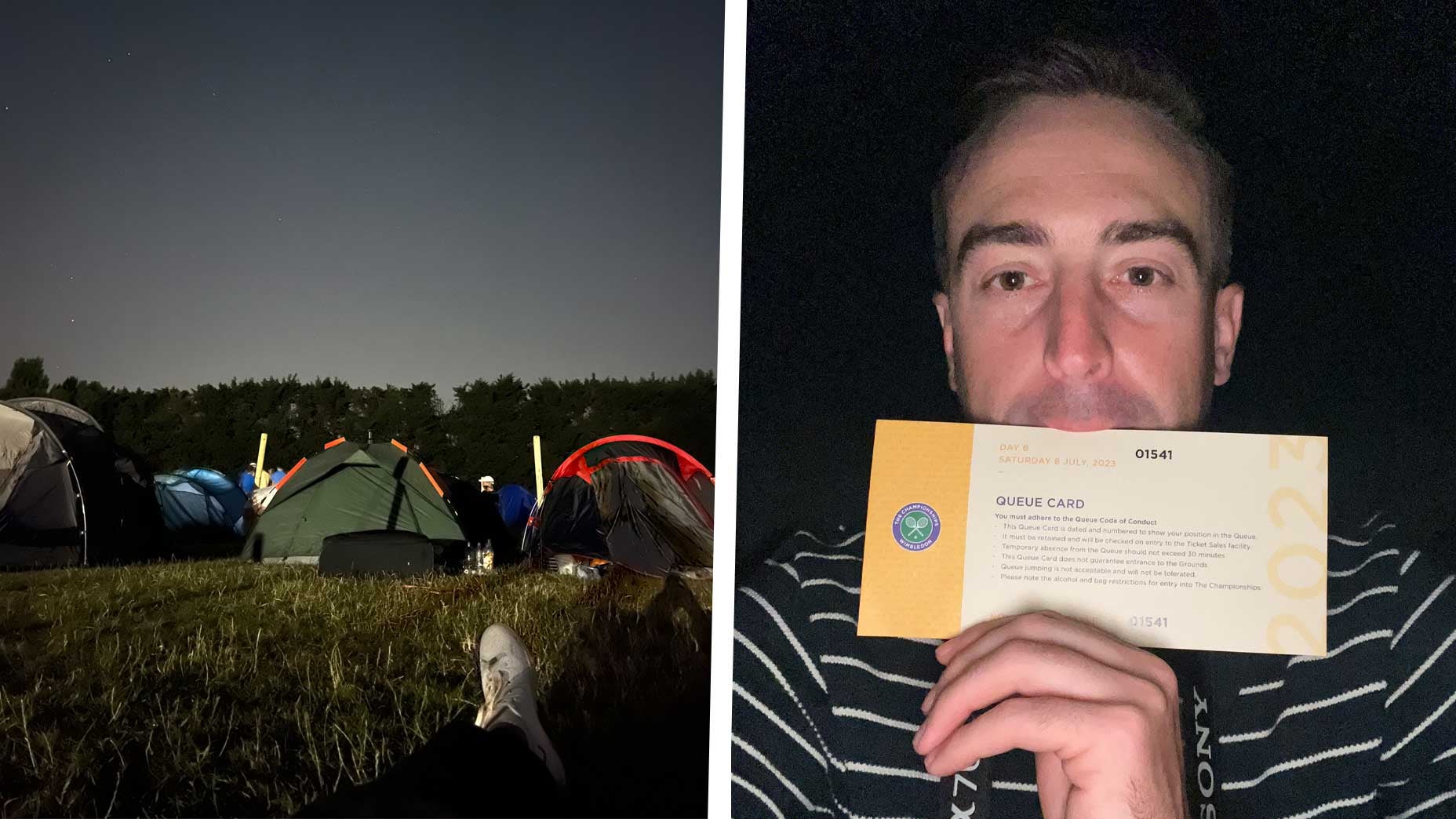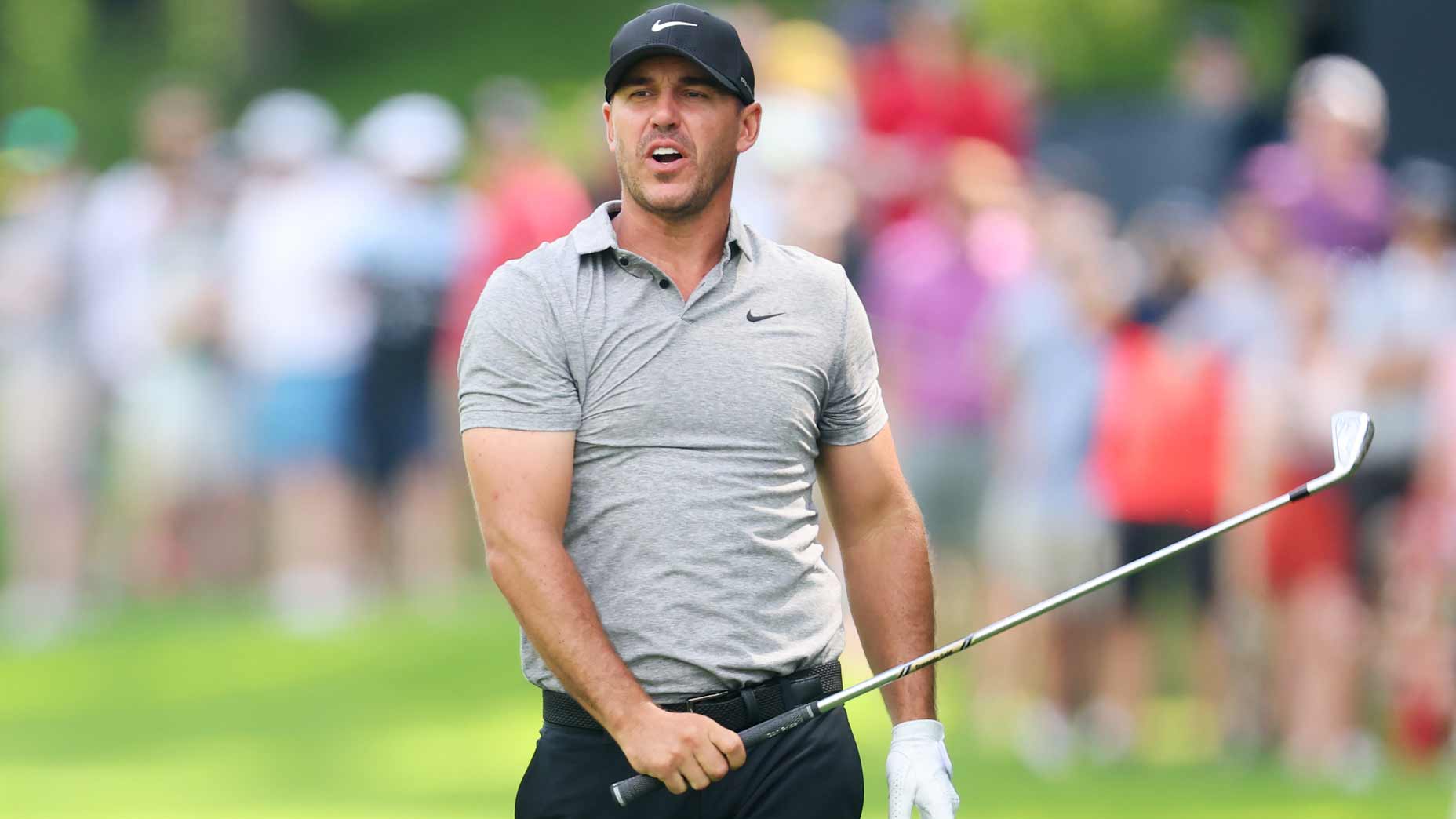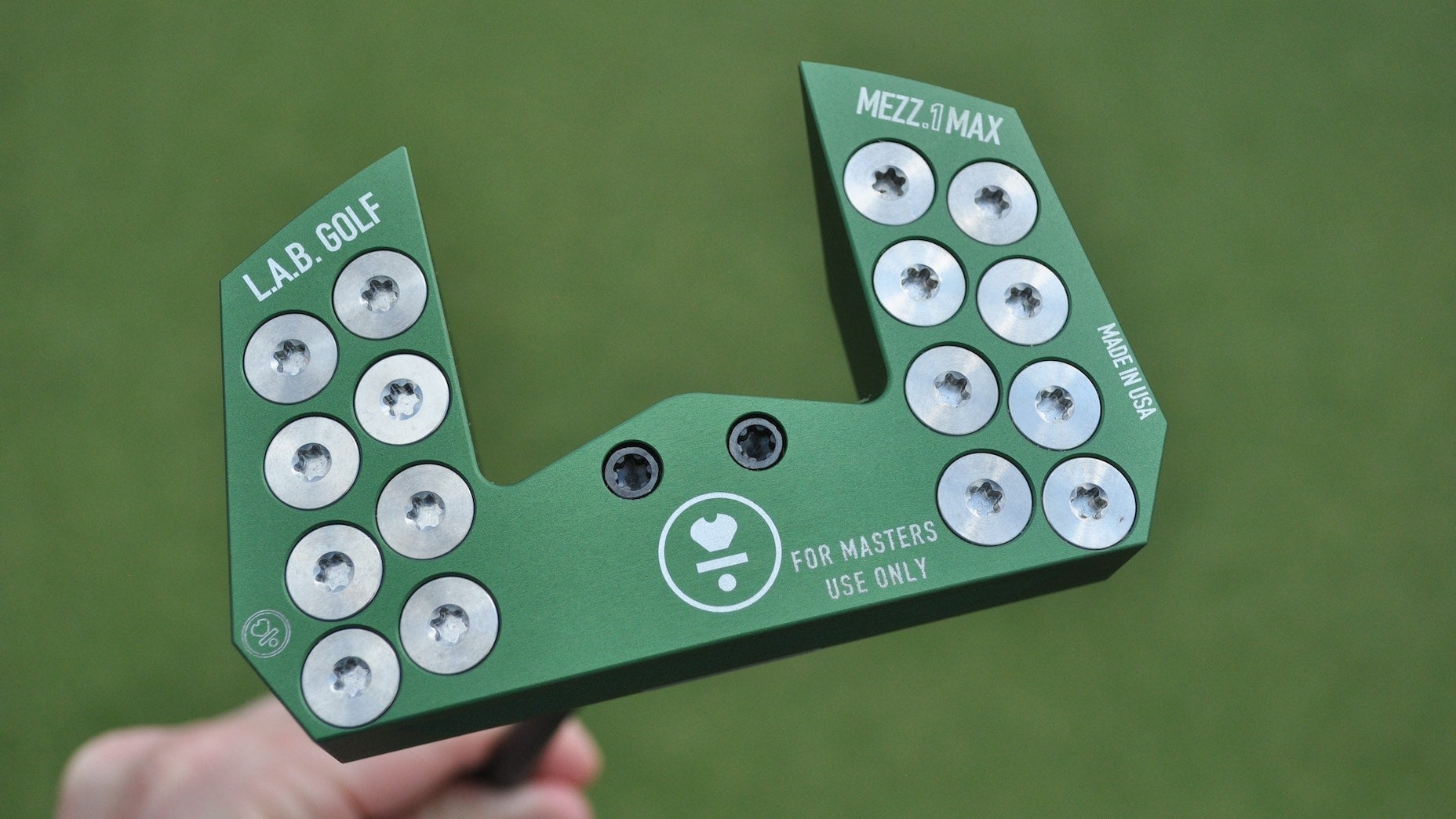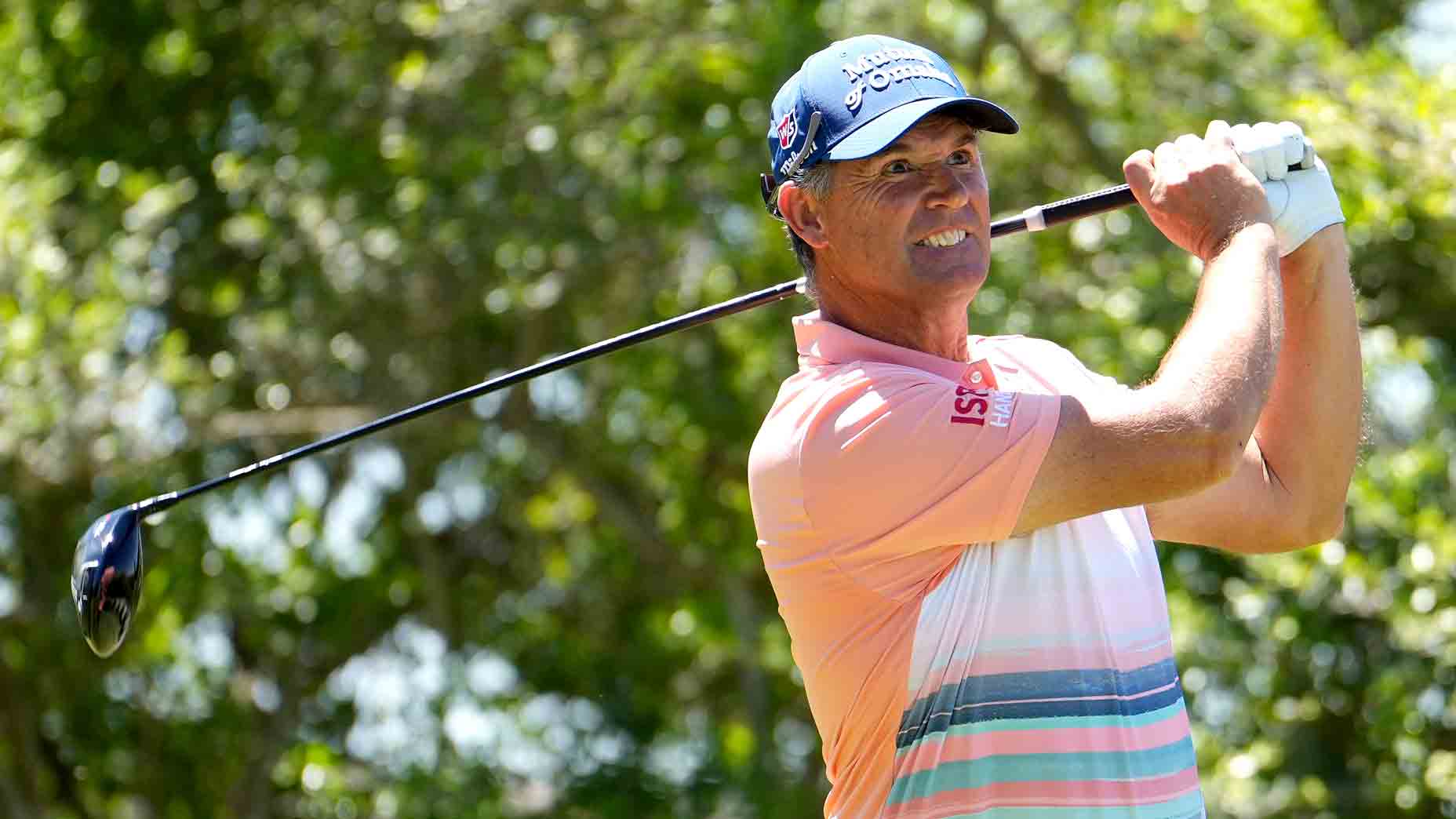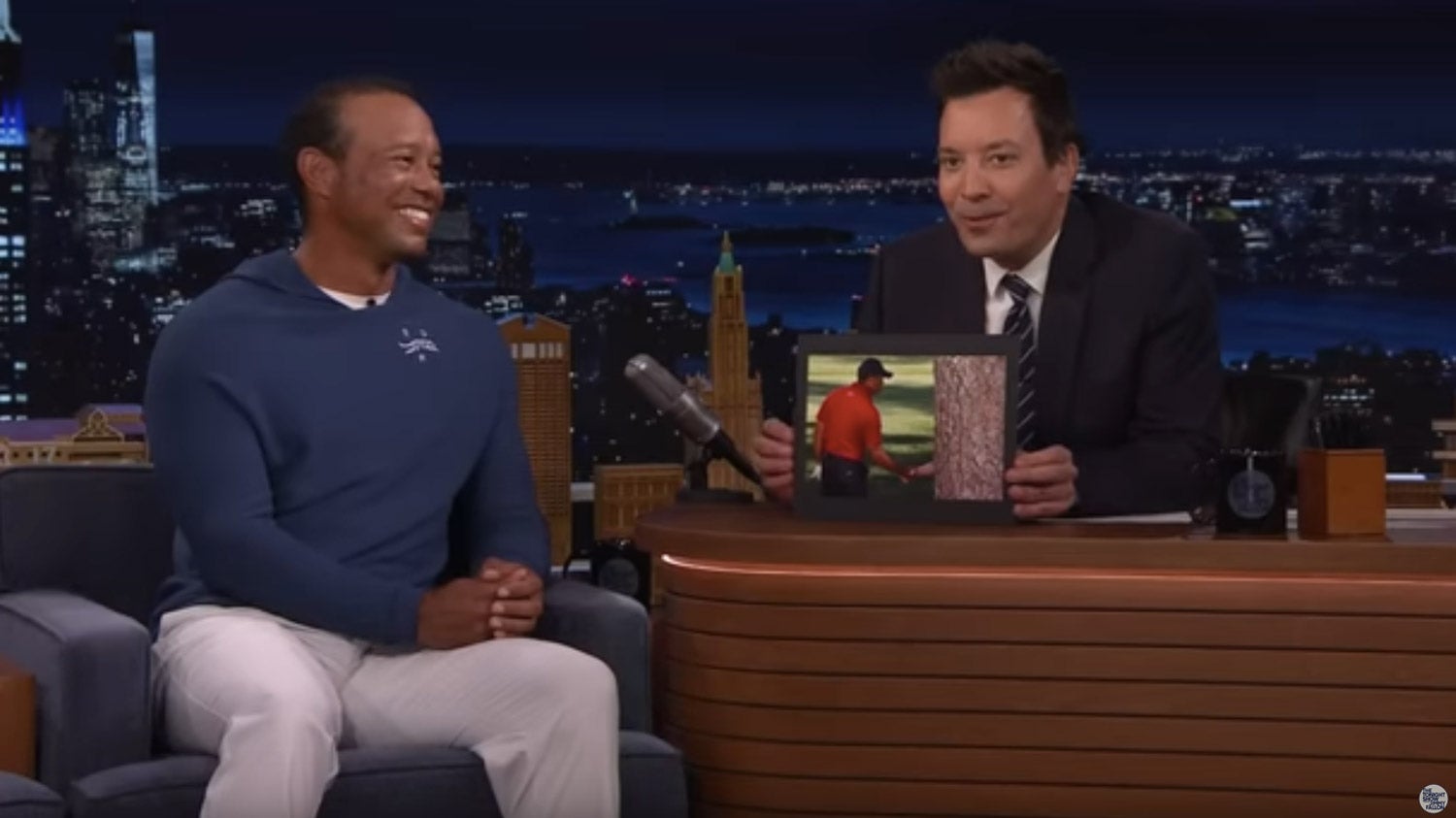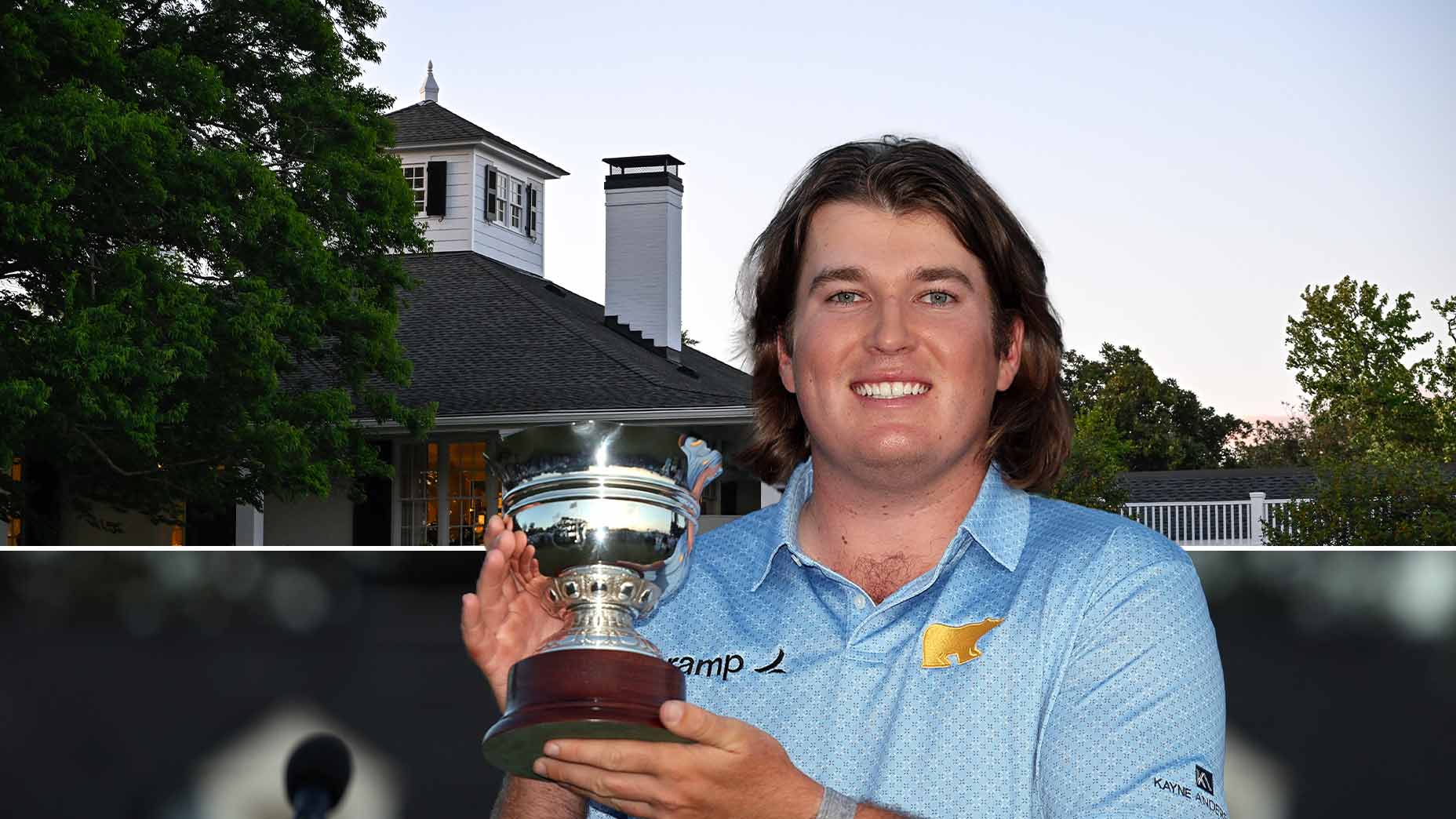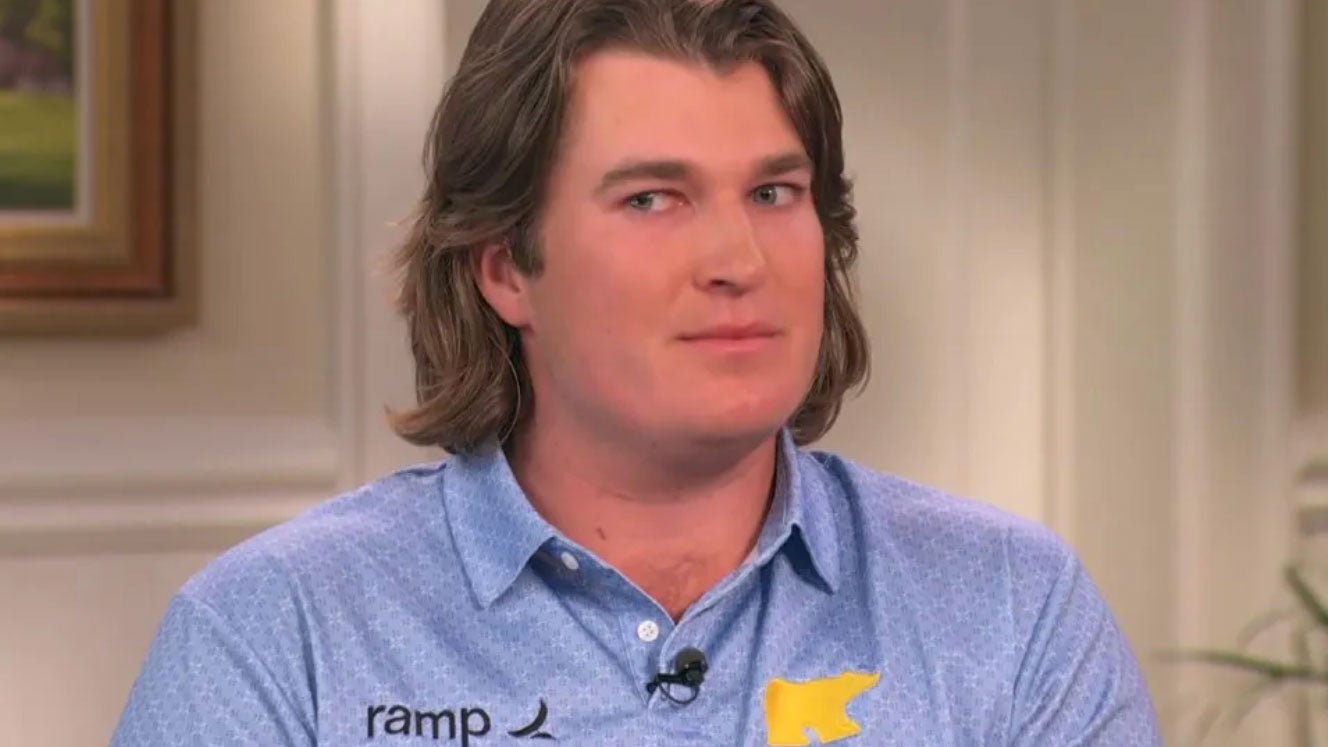3 revealing scenes tell Masters story for Rory, Scottie, Xander
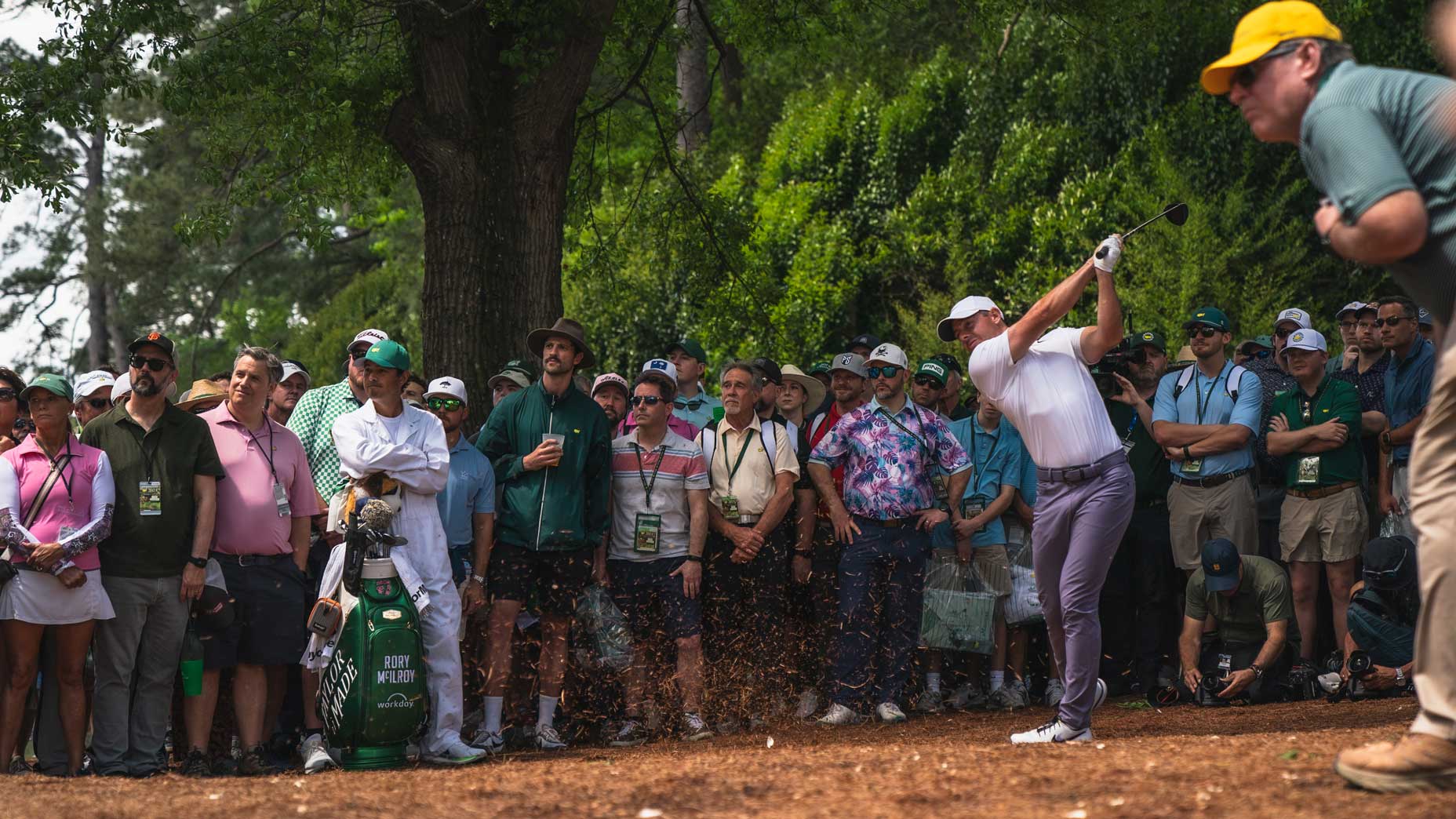
Rory McIlroy in the trees at No. 2.
Darren Riehl
AUGUSTA, Ga. — Harry Diamond cranes his neck. He peers over the top of the crowd. He gives a little jump. Then a point. Finally he acquires the information he needs and turns back to his boss.
“Scottie’ll go,” he says.
Being Rory McIlroy’s caddie means knowing how to navigate crowds. It means knowing how to navigate trees. It means knowing how to navigate high-powered playing partners. The Masters may have the best crowds, the best trees and the best playing partners of any professional golf tournament, that doesn’t mean you want to be 30 yards right of the second fairway, helping direct traffic while your player decides whether he can thread a fairway wood just to the right of one tree and just under the bottom limbs of another.
“Behind the trees, please!” Diamond shouts to the crowd up ahead. “Behind the trees, if you can!”
McIlroy addresses the ball. He’s about ready to hit when a gust of wind flares up in his face. McIlroy has done everything quickly this week — late arrival, brief press conference, short practice schedule — and it seems like he’ll quick-play this one, too, but at the last moment he steps off, instead. That seems like a good call. After a little more waiting and a few air-swings McIlroy readdresses the ball and sends a low line drive searing past the first tree and under the next and through the U-shaped gallery before bounding down the fairway to safety.
It’s a high-powered group. This week’s highest-powered, by far. Scheffler is the World No. 1. McIlroy is the World No. 2. And Xander Schauffele, their third, is World No. 5. On this afternoon, the second hole tells a story.
Scheffler is the only one of the three to find the fairway. He plays his second to the front edge of the green. He chips it just past the hole. And he cleans up his birdie.
Schauffele finds the fairway bunker. He plays from there down the fairway. He hits a wedge shot inside 10 feet. That putt slides by.
McIlroy? He does what he’s been doing. He gets himself in trouble, then out of trouble, then back in, launching his wedge shot long and left of the green en route to a bogey 6. Two holes into the Masters he’s two shots behind Scottie Scheffler. That’s not a man to spot strokes.
——–
Even when Scheffler misses, he makes.
The wind is swirling at No. 12 and Scheffler’s confused. McIlroy plays first and hits one close. But Scheffler goes next and airmails the green into the back bunker. Now he’s faced with a sand shot to a downslope and will do well to avoid his first bogey of the day.
Scheffler seems unperturbed.
“It’s just kind of one those deals where you really are guessing sometimes,” Scheffler will say later. “And I hit the shot exactly how I wanted to. The wind stopped, and it airmailed the green, but I can kind of hand my club to Teddy and just be like, ‘Well, we did what we tried to do.’
“You can’t get every wind right. It’s not possible. Did a good job of staying in the moment there, and then hit a great bunker shot after that.”
Great bunker shot is right. Scheffler takes a full swing. The ball lands softly on the edge of the green. It trundles down towards the hole, makes a gentle collision with the flagstick and falls to the bottom. Birdie.
On the very next hole, the par-5 13th, Scheffler hits the perfect tee shot but not the perfect second. Just as he reaches the top of his backswing someone on an adjacent hole makes contact with the ball and he gives a little flinch and instead of a high draw (I’m just guessing here) Scheffler’s ball starts right and stays right and lands in the creek beside the green.
At least, that’s what everybody thinks. That’s what Scheffler thinks. As he’s walking up to the green he’s trying to figure out where his ball entered the penalty area so he can take a proper drop.
But as it turns out Scheffler’s ball hangs up on the bank.
What would be an awkward up-and-down for par turns into a relatively straightforward eagle chip and Scheffler navigates an up-and-down without issue. Birdie.
McIlroy makes birdie at 12. Schauffele makes birdie at 13. Scheffler makes birdie on both.
——–
There are three levels to post-round media commitments.
As he comes off the 18th green and signs his scorecard — six-under 66, one shot off the lead of Bryson DeChambeau — Scheffler enters what we can call Tier 1. When he emerges he hops on a cart with a green-jacketed Augusta National member and a very capable, very professional looking cart driver to be whisked off to Butler Cabin for a TV interview. Next he’ll go to the media center, where he’ll face more questions in a leather chair in a room filled with dark wood.
McIlroy signs for his 1-under 71 and enters Tier 2, which means he emerges from scoring and addresses the assembled group of media — writers, mostly — to break down his round. He says he feels like he turned a 69 into a 71, so that’s disappointing. But he knows it could have been worse, too, given the challenging conditions.
“Overall still not a bad score, and obviously a lot of golf left to play,” he says. He expresses his admiration for Scheffler, too. He says he’s the best player in the world.
“It doesn’t look like it’s 6-under par, and then at the end of the day it’s 6-under par. He’s just so efficient with everything,” he says. “If you look at Scottie compared to the rest of the field, the amount of bogey-free rounds he plays and he shoots is phenomenal, and that’s the secret to winning major championships and winning big-time golf tournaments is more limiting the mistakes rather than making a ton of birdies.”
Schauffele is in Tier 3, which means that as he emerges from scoring — he signs for an even-par 72 — he can head straight to the driving range.
The range is quiet in the sense that nobody else is on it when he arrives and just a handful of curious spectators in the bleachers behind. But wind rips through the bushes. It rattles the flags. It topples over his golf bag. It would feel ridiculous, self-flagellating even, to follow up your round by hitting range balls into a swirling gale — but the golf course is a swirling gale, too, so this is decent prep. Plus there’s some comfort in finding answers before the next day.
Schauffele’s agent, looking on, confirms as much.
“He likes it,” he says. “He likes to grind.”
Before long Diamond appears with McIlroy’s bag and, not long after, McIlroy appears, too. The gusts continue. You can see sand blowing out of the bunkers. The sun darts in and out from behind the clouds. McIlroy, like Schauffele, starts with his wedges and works his way up to driver and hits one after the next soaring towards the distant media center.
That’s where Scheffler’s wrapping up questions. He’s keeping things straightforward. He doesn’t technically say the phrase “one shot at a time,” but you get the idea. He’s keeping the ball in front of him.
“I enjoy coming here and competing in this golf tournament,” he says. “You know, the first day is over and I’m off to a good start. And going into tonight I’ll just focus on going home, getting some rest.”
Back on the range, Schauffele drops back down to wedges. McIlroy does, too.
A man and his son settle into an empty row of seats. “I can’t believe more people don’t come here and watch,” the dad says. “After fighting to barely see ’em on the course.”
As Diamond steps away from his post, another gust rips across the range, knocking McIlroy’s bag over. He lines up his next shot. It’s good practice, I guess. There’s more wind tomorrow. More golf, too.


